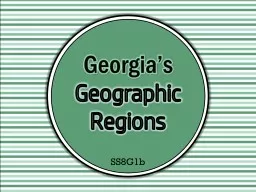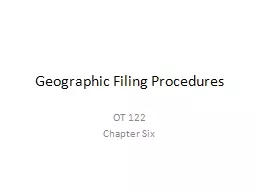PPT-Geographic Regions Georgia’s
Author : myesha-ticknor | Published Date : 2018-02-24
SS8G1b Five Regions Georgia is a geographically diverse state that is divided into five regions The first three regions Appalachian Plateau Valley and Ridge
Presentation Embed Code
Download Presentation
Download Presentation The PPT/PDF document "Geographic Regions Georgia’s" is the property of its rightful owner. Permission is granted to download and print the materials on this website for personal, non-commercial use only, and to display it on your personal computer provided you do not modify the materials and that you retain all copyright notices contained in the materials. By downloading content from our website, you accept the terms of this agreement.
Geographic Regions Georgia’s: Transcript
Download Rules Of Document
"Geographic Regions Georgia’s"The content belongs to its owner. You may download and print it for personal use, without modification, and keep all copyright notices. By downloading, you agree to these terms.
Related Documents














